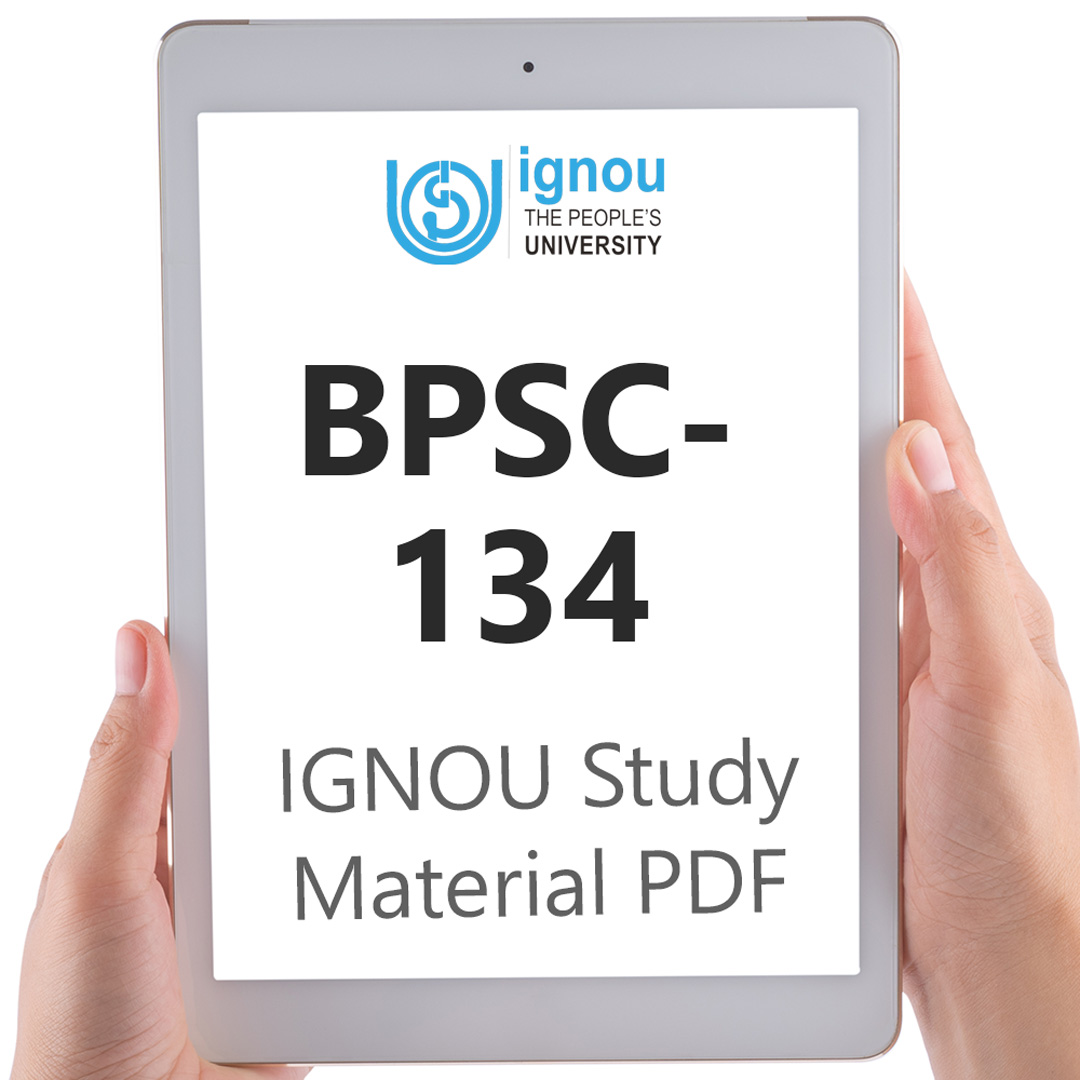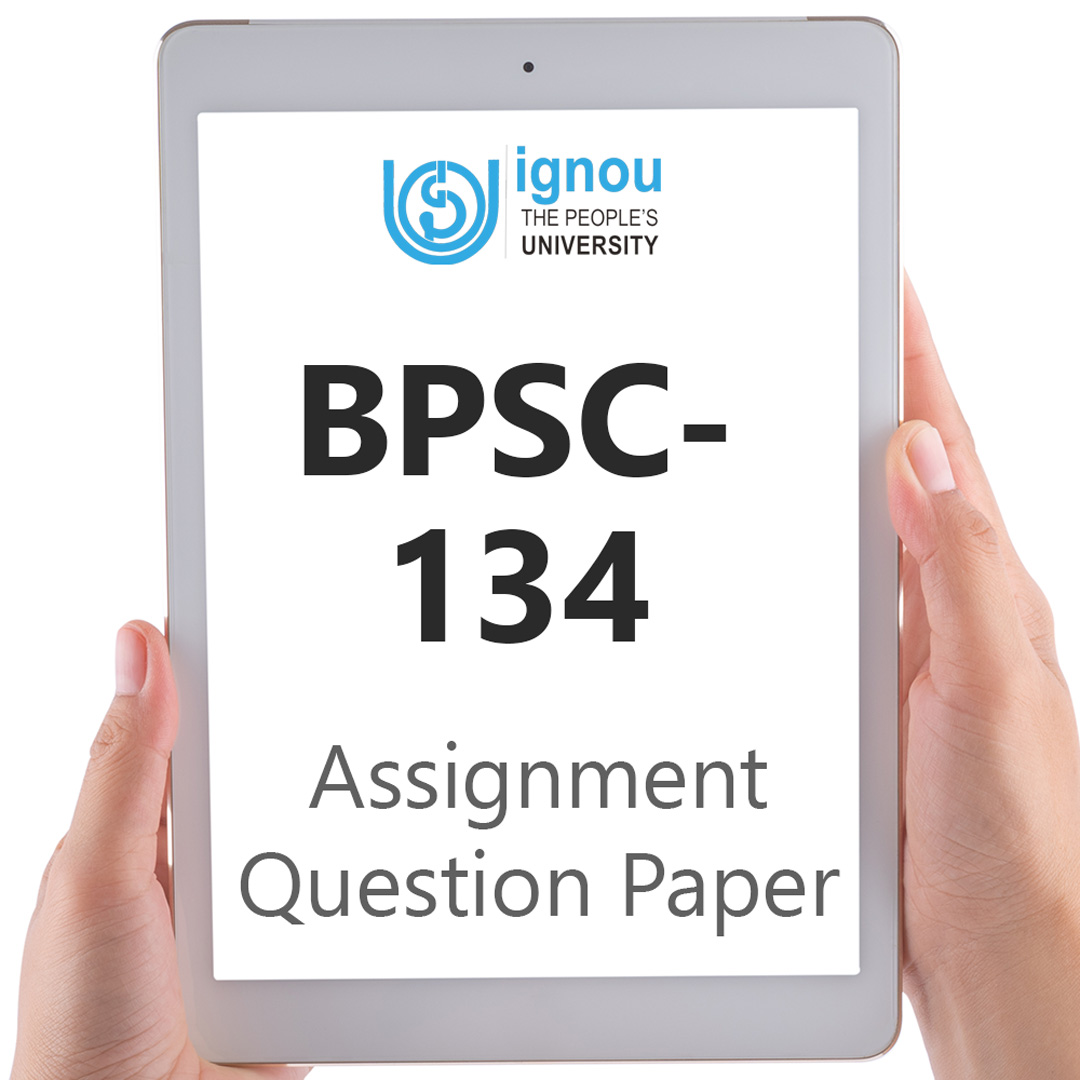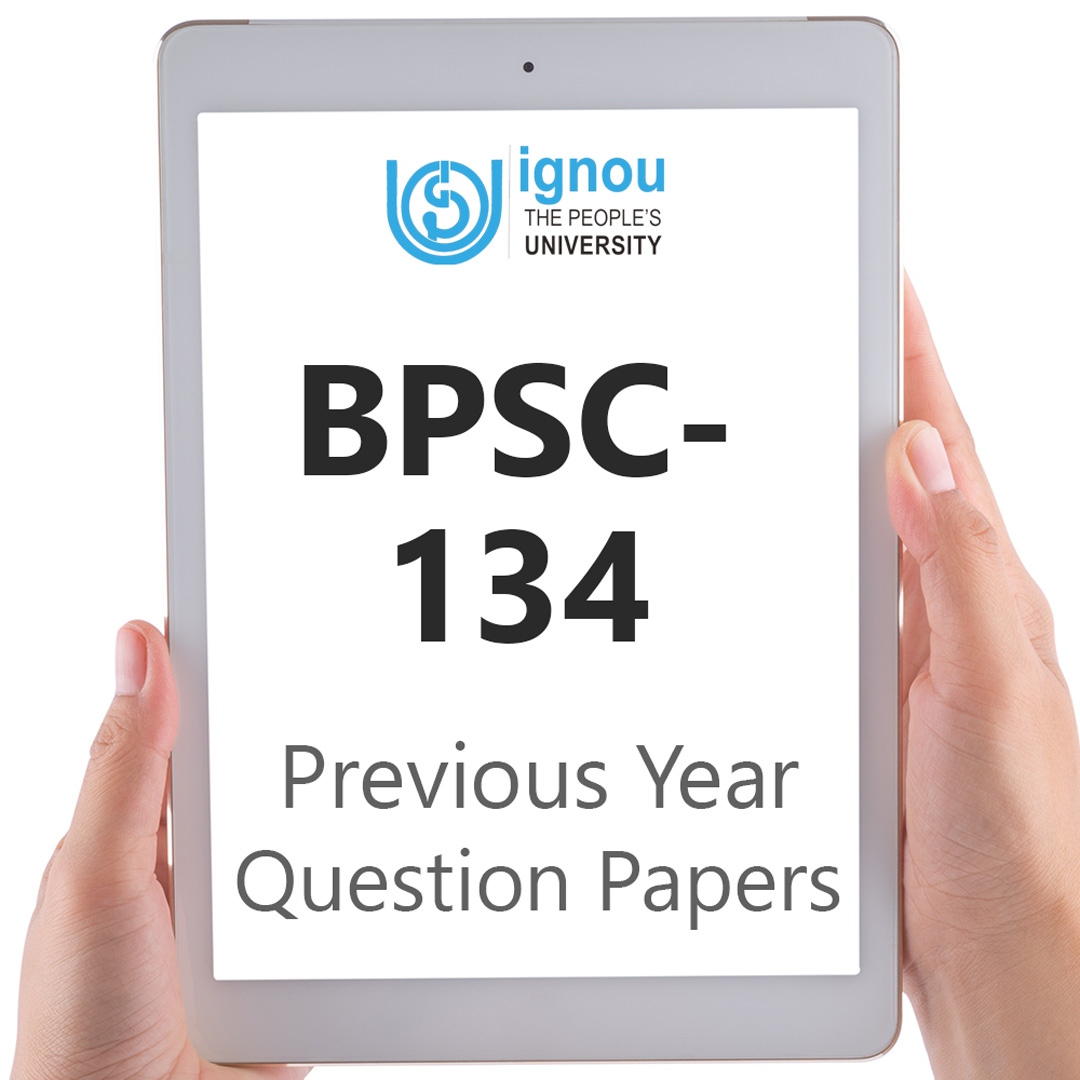If you are looking for BPSC-134 IGNOU Solved Assignment solution for the subject Introduction to International Relations, you have come to the right place. BPSC-134 solution on this page applies to 2023-24 session students studying in BAG courses of IGNOU.
BPSC-134 Solved Assignment Solution by Gyaniversity
Assignment Code: BPSC-134/ASST/TMA/2023-24
Course Code: BPSC-134
Assignment Name: Introduction of International Relations
Year: 2023-2024
Verification Status: Verified by Professor
Assignment - I
Answer the following in about 500 words each.
Q1) Critically examine the role of international organisations and multilateralism in world politics.
Ans) International organizations and multilateralism play pivotal roles in shaping contemporary world politics, yet their effectiveness and impact are subjects of ongoing debate and scrutiny.
Role of International Organizations in World Politics
International organizations (IOs) play a multifaceted role in shaping world politics. Their functions encompass diplomacy, conflict resolution, economic cooperation, and the promotion of global governance. However, their impact is subject to criticism and challenges.
a) Diplomacy and Conflict Resolution:
1) Strengths: IOs provide platforms for diplomatic dialogue, fostering communication and collaboration among nations. Organizations like the United Nations (UN) facilitate negotiations, preventing conflicts and promoting peaceful resolutions.
2) Weaknesses: The effectiveness of IOs in conflict resolution is limited when member states pursue divergent national interests. The Security Council's veto power often hampers decisive actions, leading to prolonged conflicts.
b) Economic Cooperation and Development:
1) Strengths: Institutions like the International Monetary Fund (IMF) and World Bank promote economic stability and development through financial assistance and policy recommendations. Trade organizations, such as the World Trade Organization (WTO), facilitate global economic cooperation.
2) Weaknesses: Criticisms include the imposition of neoliberal economic policies, exacerbating inequality and limiting national sovereignty. Conditionalities attached to loans may lead to economic hardships in recipient countries.
c) Human Rights and Humanitarian Assistance:
1) Strengths: IOs contribute to the advancement of human rights through conventions and agencies like the United Nations Human Rights Council. Humanitarian organizations like the International Red Cross provide aid during crises.
2) Weaknesses: Challenges include selective intervention, as powerful nations may escape accountability for human rights violations. Bureaucratic inefficiencies and politicization can hinder effective humanitarian responses.
d) Global Governance and Environmental Issues:
1) Strengths: IOs address transnational challenges, including climate change and pandemics. Agreements like the Paris Agreement demonstrate efforts to coordinate global responses to shared challenges.
2) Weaknesses: Inadequate enforcement mechanisms and non-binding agreements limit the effectiveness of IOs in addressing environmental crises. Power imbalances may hinder consensus on crucial issues.
Multilateralism in World Politics
Multilateralism, involving collaboration among multiple nations to address global issues, is considered a cornerstone of international relations. It operates through treaties, alliances, and IOs, contributing to stability and cooperation.
a) Strengths of Multilateralism:
1) Conflict Prevention: Multilateral institutions provide avenues for diplomatic dialogue, reducing the likelihood of armed conflicts. Treaties and alliances foster mutual security and stability.
2) Global Economic Cooperation: Multilateral trade agreements facilitate economic interdependence, fostering stability and development. Organizations like the G20 promote coordinated responses to economic challenges.
3) Humanitarian Action: Collaborative efforts through IOs address humanitarian crises and disasters, leveraging resources and expertise for effective responses.
b) Challenges and Criticisms:
1) Power Imbalances: Multilateralism can be undermined by power imbalances, with powerful nations influencing decision-making to serve their interests. This challenges the principles of equality and inclusivity.
2) Slow Decision-Making: Consensus-based decision-making processes can be slow and cumbersome, hindering swift responses to urgent global challenges.
3) Erosion of Sovereignty: Some argue that participation in multilateral agreements and organizations may compromise national sovereignty, limiting a nation's ability to pursue independent policies.
c) Recent Trends:
1) Rise of Unilateralism: Some nations, particularly major powers, have exhibited tendencies toward unilateralism, challenging the principles of multilateral cooperation.
2) Populism and Nationalism: The rise of populist and nationalist movements in various countries poses challenges to the cooperative spirit of multilateralism, as some leaders prioritize domestic interests over global collaboration.
In conclusion, while IOs and multilateralism contribute significantly to world politics by fostering cooperation, peace, and development, their effectiveness is contingent on overcoming challenges such as power imbalances, slow decision-making, and the erosion of sovereignty. Adapting to contemporary geopolitical shifts and addressing criticisms is essential for these mechanisms to play a constructive role in addressing global challenges.
Q2) Explain the basic tenets of Feminism in international relations.
Ans) Feminism in international relations is a multifaceted approach that challenges traditional perspectives within the field. It encompasses various theories, perspectives, and frameworks aimed at understanding and rectifying gender-based inequalities and power dynamics within global politics.
Here are the fundamental tenets of feminism in international relations:
a) Gender as a Central Analytical Category:
Feminism in international relations places gender at the core of analysis. It acknowledges that traditional IR theories often overlooked or marginalized the role of gender in shaping global politics. By foregrounding gender, feminists highlight how social constructs of masculinity and femininity influence international relations, impacting policies, institutions, and power dynamics. It emphasizes that gender is not just a personal identity but a social construct that intersects with other factors like race, class, and nationality.
b) Critique of Patriarchy and Power Structures:
One of the central tenets of feminist IR is its critique of patriarchal structures within global politics. It challenges the male-centric nature of traditional power structures, arguing that these structures perpetuate inequality and marginalization of women in decision-making processes, diplomacy, conflict resolution, and peacebuilding efforts. Feminist scholars often examine how these structures reproduce unequal power relations and advocate for their transformation.
c) Intersectionality:
Feminist IR adopts an intersectional approach, recognizing that individuals hold multiple identities shaped by various social factors like race, ethnicity, class, sexuality, and more. It acknowledges that these intersecting identities contribute to different experiences of oppression and privilege. Intersectionality helps in understanding how different forms of discrimination intersect and compound, affecting individuals' positions in global politics differently.
d) Advocacy for Gender Equality and Empowerment:
Feminist IR advocates for gender equality and the empowerment of all genders. It seeks to address gender-based discrimination, violence, and exclusion in both domestic and international contexts. This includes advocating for women's rights, access to education, healthcare, economic opportunities, and political participation. Feminist approaches also focus on challenging harmful gender norms and stereotypes that perpetuate inequalities.
e) Gendered Analysis of Conflict and Security:
Feminist IR sheds light on the gendered nature of conflict, security, and peacebuilding. It highlights the disproportionate impact of conflicts on women and other marginalized groups, emphasizing their experiences as victims but also as agents of change. Moreover, it critiques traditional security paradigms that often prioritize military solutions and explores alternative, inclusive approaches to security that consider the needs and perspectives of diverse populations.
f) Transformation of International Institutions and Policies:
Feminist IR calls for transforming international institutions and policies to be more inclusive and gender-sensitive. It advocates for the integration of gender perspectives into decision-making processes, policy formulation, and implementation at local, national, and international levels. This includes promoting gender mainstreaming, which involves considering gender implications in all policies and programs.
In essence, feminist perspectives in international relations challenge the status quo by reimagining global politics through a lens that accounts for gendered experiences, power dynamics, and the need for equality and inclusivity. These principles form the basis for ongoing scholarly debates, policy advocacy, and activism aimed at creating a more equitable and just international system.
Assignment - II
Answer the following questions in about 250 words each.
Q1) Discuss characteristics of various types of powers in the international system.
Ans) Characteristics of Various Types of Powers in the International System:
Q2) Critique of modernisation theory.
Ans) Modernization theory emerged in the mid-20th century, aiming to explain the development trajectory of societies from traditional to modern forms. However, it has faced significant critique for its assumptions and limitations:
a) Ignoring Cultural Diversity:
One of the major criticisms of modernization theory is its assumption of a linear path to development, largely based on the Western experience. It disregards cultural diversity and the unique historical, social, and economic contexts of different societies. This approach overlooks the rich tapestry of cultures and assumes that all societies should follow a Western-style modernization model.
b) Economic Determinism and Structural Bias:
Modernization theory heavily emphasizes economic growth as the primary driver of development. It tends to overlook social, political, and cultural aspects, reducing development to a unidimensional economic process. This narrow focus on economic indicators as the sole measure of progress disregards the importance of social equity, political participation, and cultural values in development.
c) Neglecting Inequality and Power Dynamics:
The theory overlooks the unequal distribution of benefits within societies undergoing modernization. It fails to address how development often exacerbates existing inequalities, concentrating wealth and power in the hands of a few. Moreover, it neglects the global power dynamics that shape and sometimes hinder the development of less economically powerful nations, perpetuating a dependency on more developed countries.
d) Overlooking Non-Western Paths of Development:
Modernization theory assumes that all societies will eventually converge toward a Western model of development. However, it fails to acknowledge alternative paths to progress that may not align with Western norms. Many non-Western societies have their unique ways of development that may not necessarily follow the prescribed modernization path.
e) Lack of Agency and Participation:
Critics argue that modernization theory undermines the agency of individuals and communities in shaping their own development. It often imposes top-down approaches, ignoring the significance of local knowledge, traditions, and grassroots initiatives in fostering sustainable development.
In essence, while modernization theory contributed to understanding societal change, its oversimplification, Western-centric bias, and neglect of diverse pathways to development limit its applicability and relevance in comprehensively addressing the complexities of global development.
Q3) Explain different versions of Constructivism
Ans) Constructivism in international relations encompasses various versions or strands that offer distinct perspectives on how ideas, norms, and identities shape global politics. Here are explanations of different versions of Constructivism:
a) Classical Constructivism:
Rooted in the work of Alexander Wendt, classical constructivism focuses on the role of ideas, norms, and social constructions in shaping state behaviour and international relations. It argues that state interests and actions are not solely determined by material factors but are socially constructed. States' identities, perceptions, and interactions are influenced by shared understandings and norms, which in turn shape their behaviour in the international system.
b) Normative Constructivism:
Normative constructivism places a strong emphasis on the role of norms in shaping international relations. It highlights how norms, such as human rights, democracy, and sovereignty, influence state behaviour and interactions. Normative constructivists argue that norms are not static but can change over time through social interactions, leading to shifts in state practices and policies.
c) Sociological Constructivism:
Sociological constructivism focuses on the social structures and processes that shape state identities and interests. It emphasizes the role of social interactions, institutions, and collective identities in influencing state behaviour. Sociological constructivists explore how identities are formed through interactions with other states, international organizations, and non-state actors, impacting state preferences and actions.
d) Critical Constructivism:
Critical constructivism takes a more critical approach by questioning power structures and hierarchies in the international system. It examines how certain ideas and norms serve the interests of dominant states or groups, perpetuating inequalities. Critical constructivists aim to uncover and challenge underlying power dynamics embedded in social constructions and norms.
e) Post-structuralist Constructivism:
Drawing from post-structuralist thought, this strand of constructivism explores the role of language, discourse, and power in shaping international relations. It focuses on deconstructing dominant discourses and narratives to reveal how they construct reality and shape state behaviour. Post-structuralist constructivists highlight the contested nature of knowledge and the impact of language in shaping our understanding of global politics.
Each version of constructivism offers a unique perspective on how ideas, norms, and identities influence international relations, contributing to a more nuanced understanding of the complexities of global politics beyond traditional materialist perspectives.
Assignment - III
Answer the following questions in about 100 words each.
Q1) World System Theory.
Ans) The World-System Theory, which was created by the sociologist Immanuel Wallerstein, portrays the global economy as a single capitalist system that is separated into zones that are considered to be core, semi-periphery, and periphery. The hypothesis proposes that the differences in income and power that exist between different regions are the outcome of the historical spread of capitalist activity. The core nations exert their economic and political dominance over the periphery territories, thereby extracting resources from those regions. Between the two are nations that are semi-peripheral. The traditional views of development and global inequality as interconnected outcomes of the capitalist world economy are challenged by this theory, which places an emphasis on historical processes, unequal power dynamics, and the interconnectedness of nations within a framework of global capitalism.
Q2) Elements of national power.
Ans) National power comprises several elements that contribute to a country's influence and capability:
a) Military Power: A nation's military strength, including manpower, technology, and defines capabilities, ensures security and deters threats.
b) Economic Power: Wealth, productivity, and trade influence a nation's standing. Factors like GDP, resources, and industrial capacity are vital.
c) Political Power: Diplomatic relations, alliances, and influence in international organizations determine a nation's ability to shape global policies and norms.
d) Soft Power: Cultural influence, ideology, and attractiveness amplify a nation's appeal and ability to shape opinions globally.
e) Informational Power: Control over information, technology, media, and narratives influences global perceptions and agendas.
Q3) Classical Realism.
Ans) Classical Realism is a school of thought in international relations emphasizing the role of human nature and power politics. Developed by scholars like Thucydides and later refined by Hans Morgenthau, it posits that states are primarily motivated by self-interest, power, and security. Classical Realism contends that anarchy in the international system leads to a perpetual struggle for power. It is sceptical about the possibility of achieving lasting peace and believes that states are inherently driven by a desire for survival, leading to a focus on national security, military strength, and strategic calculations in their foreign policy decisions.
Q4) What is balance of power? Explain.
Ans) In the realm of international relations, the notion of "balance of power" refers to the endeavour of governments to prevent any one actor from acquiring an overwhelming amount of power in order to dominate other actors. It is based on the idea of equilibrium, which states that in order to maintain stability, nations should align themselves and counterbalance against a state or coalition that is believed to be powerful. By forming alliances, increasing military might, or engaging in diplomatic operations, it is possible to achieve this equilibrium. By ensuring that no single entity becomes overly dominant, the objective is to prevent hegemony and preserve a generally stable and peaceful international system. This involves lowering the likelihood of conflict and ensuring that no single entity becomes overwhelmingly dominant.
Q5) Concept of emerging centres of power
Ans) The concept of emerging centres of power refers to the shifting global landscape, characterized by the rise of new and influential actors beyond traditional powers. These emerging centres encompass nations, regions, or entities gaining economic, political, and military influence, altering global dynamics. Nations like China, India, Brazil, and regional blocs such as the African Union exemplify these shifts. The rise of emerging powers challenges the dominance of established powers, leading to complex multipolar or polycentric global structures, impacting international relations, trade, security, and the balance of power, fostering new alliances and reshaping global governance.







